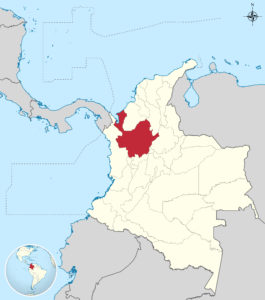Research Article
 Nathalia M. Correa-Valencia and colleagues reported on the herd-level prevalence of paratuberculosis in Northern Antioquia, Columbia. Their study, titled: Prevalence of Mycobacterium avium subsp. paratuberculosis infection in dairy herds in Northern Antioquia (Colombia) and associated risk factors using environmental sampling, appears in the latest issue of Preventive Veterinary Medicine. In comparison to other countries, the prevalence of paratuberculosis in dairy herds in this region of Columbia is low. This finding should increase efforts to protect the as yet non-infected herds.
Nathalia M. Correa-Valencia and colleagues reported on the herd-level prevalence of paratuberculosis in Northern Antioquia, Columbia. Their study, titled: Prevalence of Mycobacterium avium subsp. paratuberculosis infection in dairy herds in Northern Antioquia (Colombia) and associated risk factors using environmental sampling, appears in the latest issue of Preventive Veterinary Medicine. In comparison to other countries, the prevalence of paratuberculosis in dairy herds in this region of Columbia is low. This finding should increase efforts to protect the as yet non-infected herds.
Abstract
This cross-sectional study aimed to determine Mycobacterium avium subsp. paratuberculosis (MAP) herd-level prevalence using a quantitative real-time PCR method (qPCR), performed on environmental samples. Secondly, the study aimed to explore herd-level risk factors associated with the presence of MAP in dairy herds with in-paddock milking facilities of the Northern region of the Province of Antioquia (Colombia). Study herds (n = 292) located in 61 different districts from six municipalities were randomly selected amongst 7,794 dairies registered in the foot-and-mouth disease vaccination records from 2015. The sampling strategy considered a proportional allocation, both at municipality and district level. Participant herds were visited once between June and October 2016 to collect one composite environmental sample and to complete a risk assessment questionnaire. Each composite environmental sample contained material from six different sites of concentration of adult cattle and/or high traffic areas (e.g. areas surrounding waterers and feeders, areas surrounding the current mobile milking-unit places). Identification of MAP was achieved using a duplex qPCR (Bactotype MAP PCR Kit®, Qiagen). A herd was considered as MAP infected if the environmental sample was positive in the qPCR. Information about the general characteristics of the herd, management practices, and knowledge about the disease was collected using the risk-assessment questionnaire. The information on risk factors was analyzed using a multivariable logistic regression model. The apparent herd-level prevalence was 4.1% (12/292; 95% CI: 1.8-6.4). Herds with a history of mixed farming of cattle with other ruminants had higher odds of being MAP infected than herds without (OR = 3.9; 95% CI: 1.2-13.2). Our study demonstrates the MAP prevalence in dairy herds from Antioquia, Colombia and the possible relationship between MAP environmental positivity with the history of mixed farming of cattle with other susceptible ruminants.
This map from Wikipedia shows the location where the study was done.

Comment: Lombard et al. reported results from a survey of U.S. dairy herds using similar surveillance methods (Preventive Veterinary Medicine 108:234-238). In that NAHMS Dairy 2007 study, the apparent herd-level prevalence of MAP was 70.4% (369/524 had ≥1 culture-positive composite fecal samples out of 6 tested). Adjusting for the estimated herd sensitivity and herd specificity of the test method, the estimated TRUE herd-level prevalence of paratuberculosis in U.S. dairy herds was 91.0% (95% probability interval, 81.5 to 99.3%).